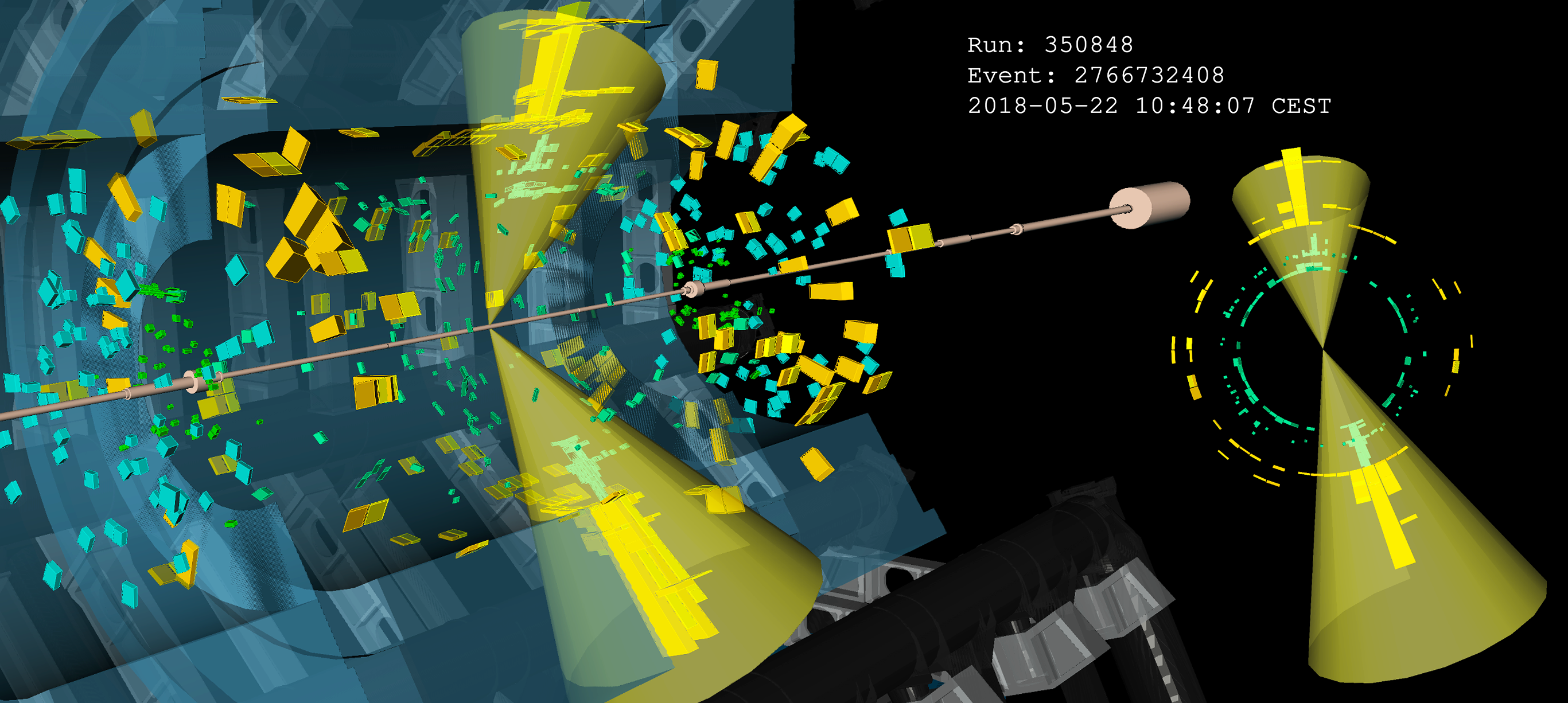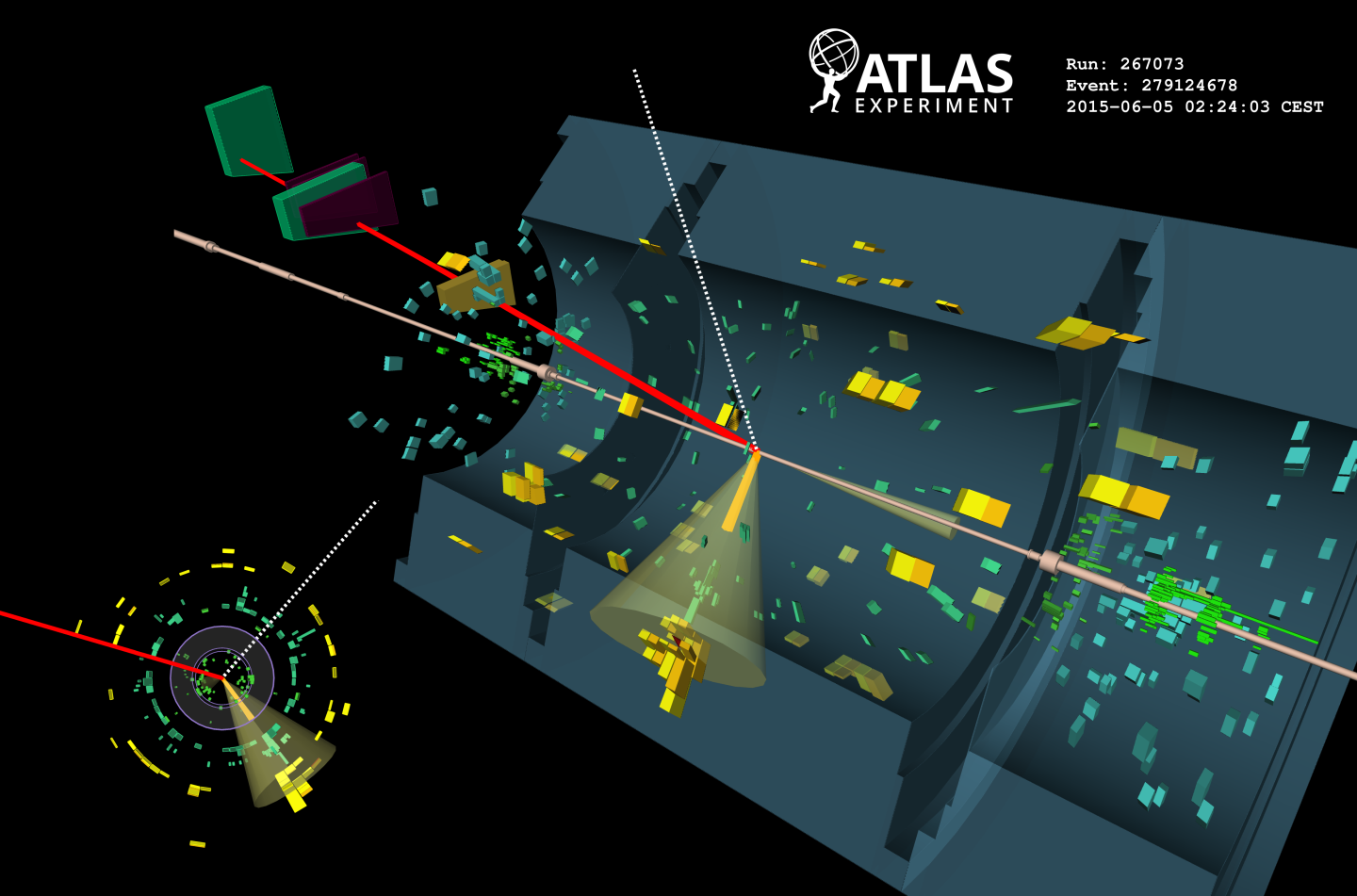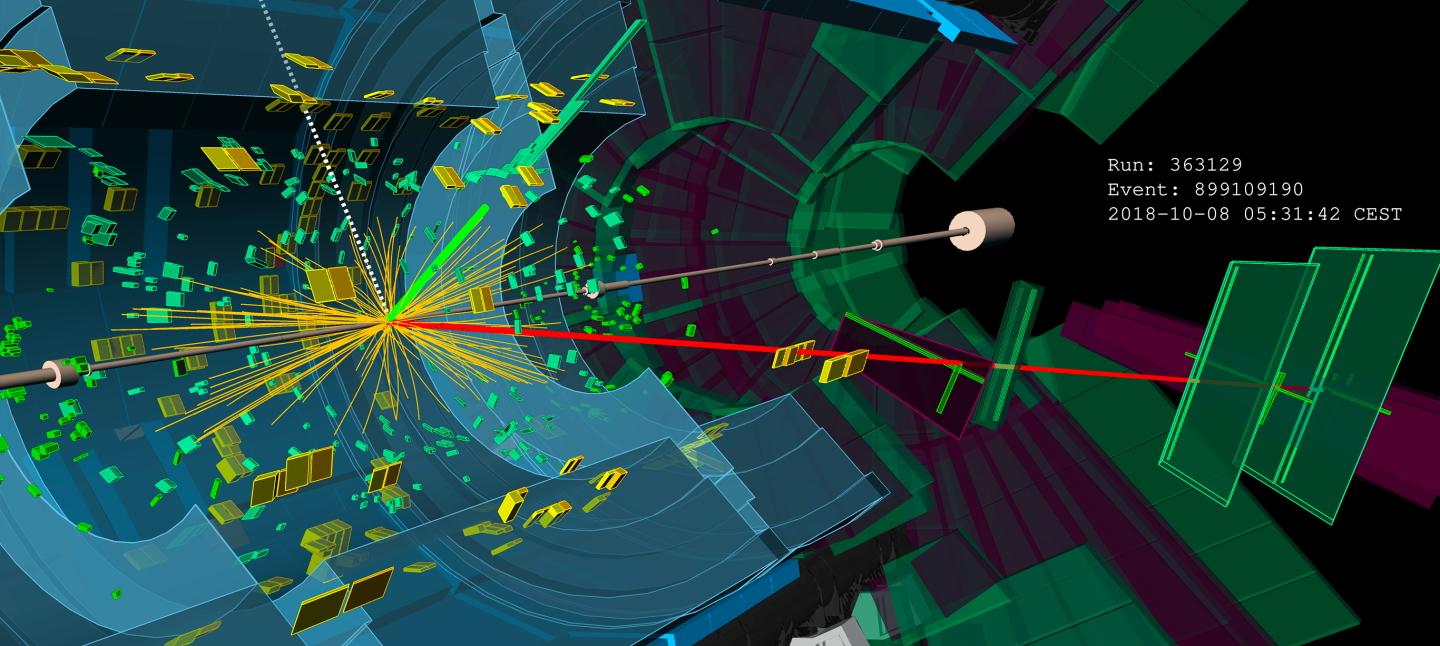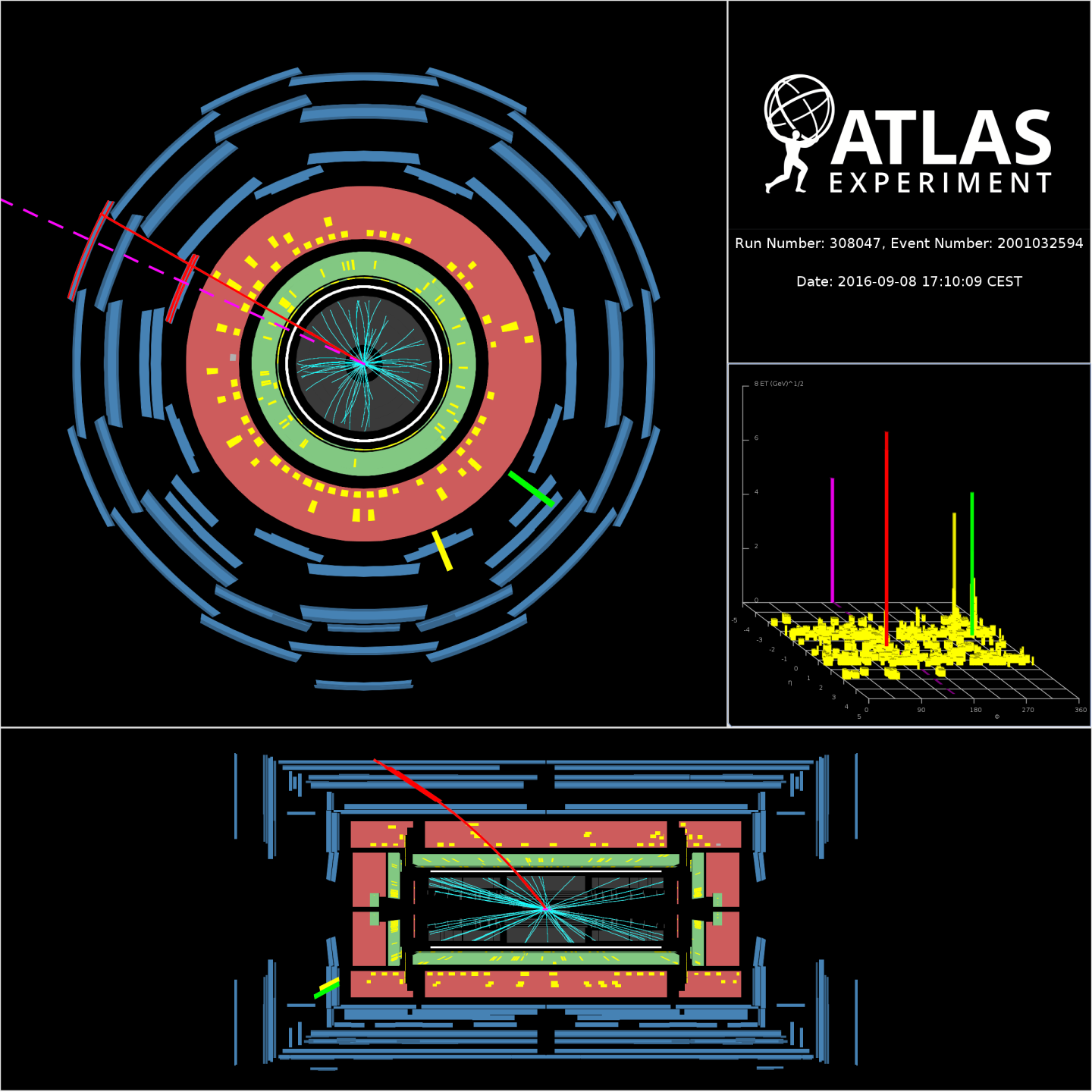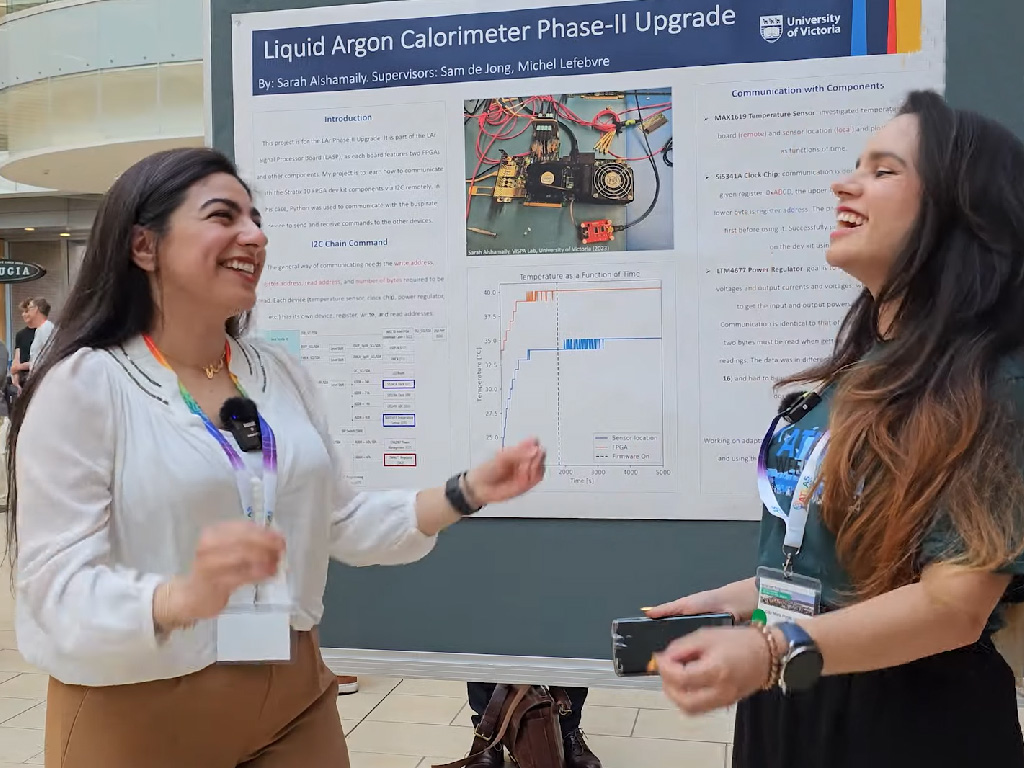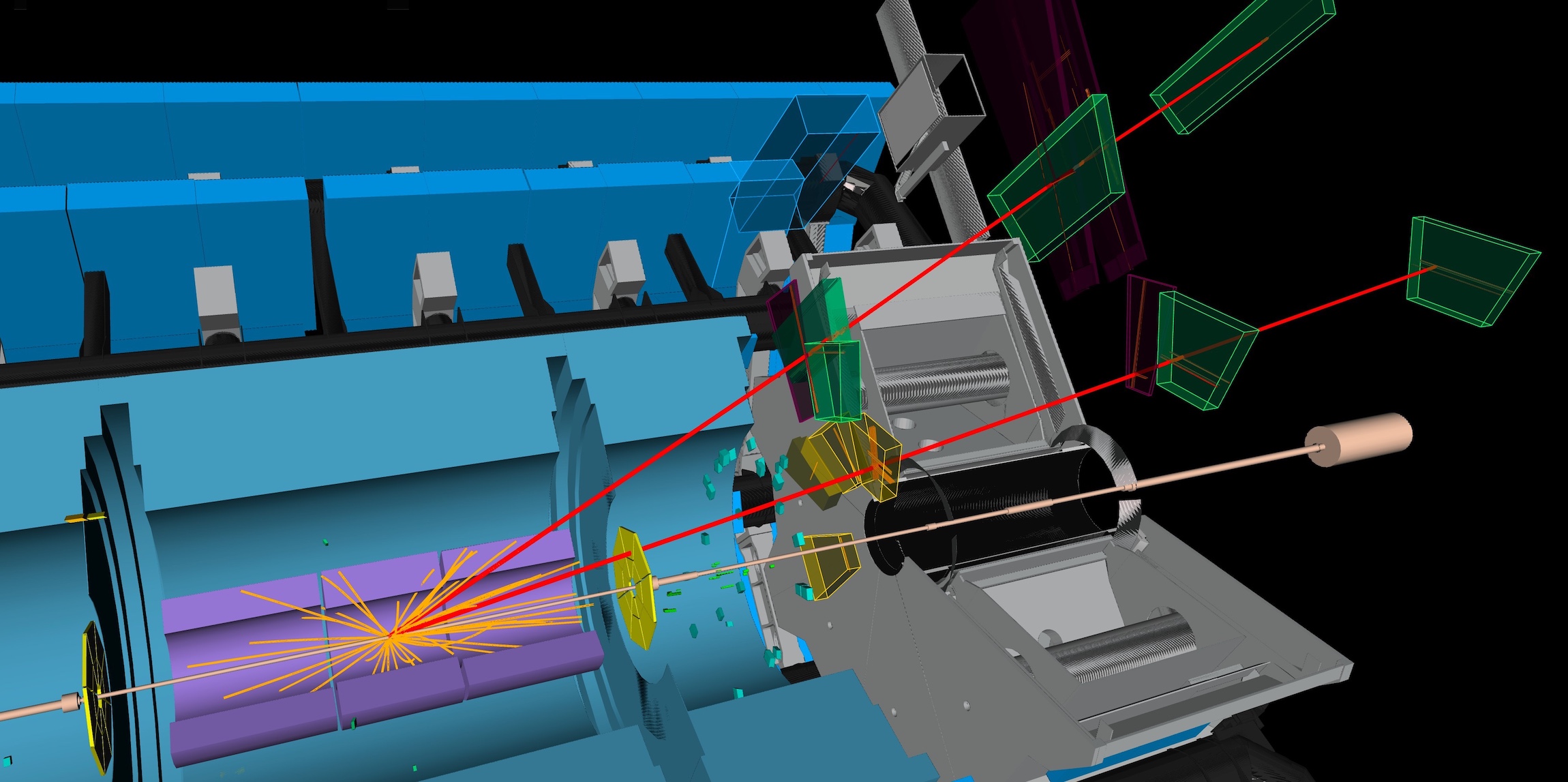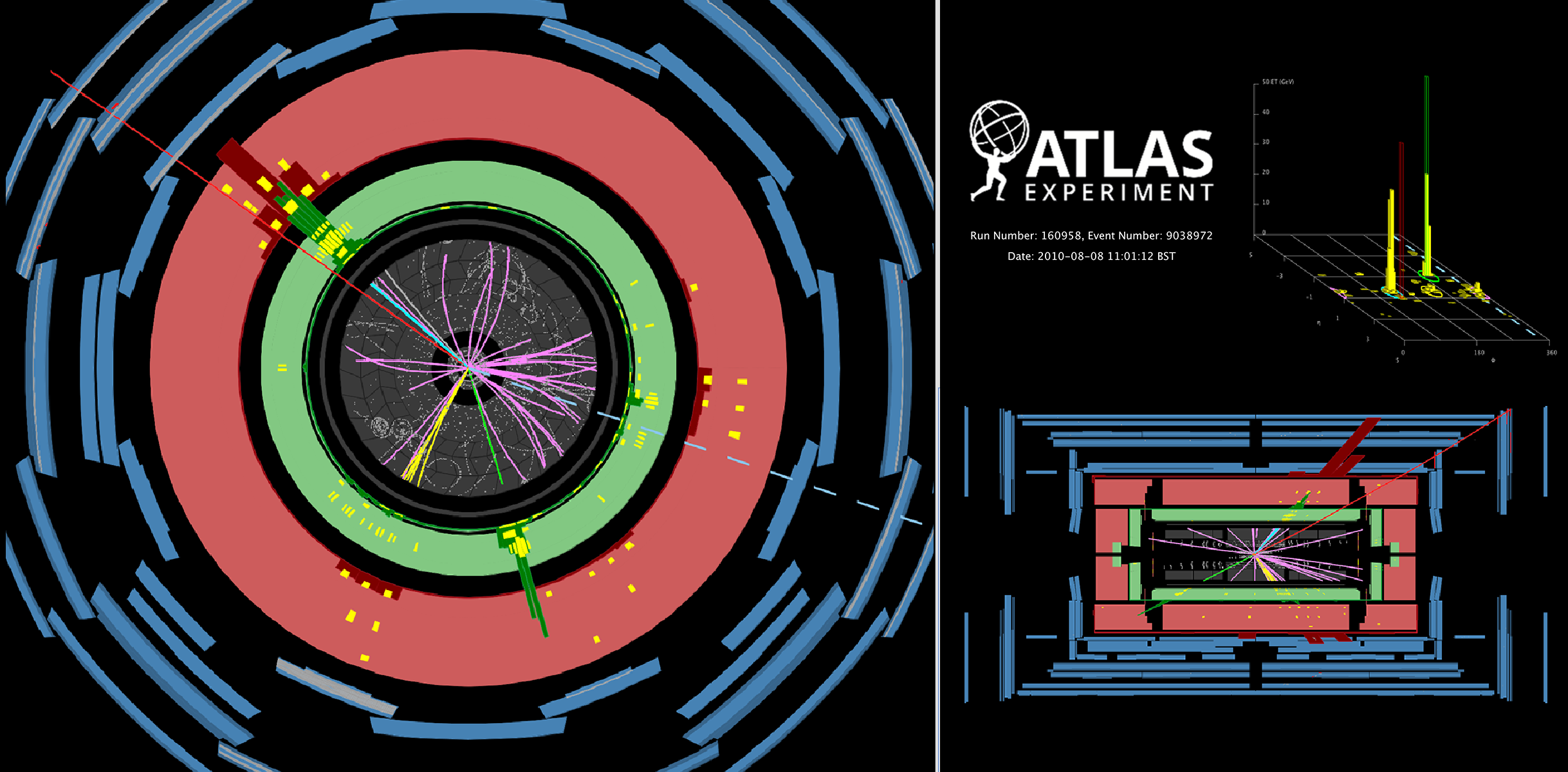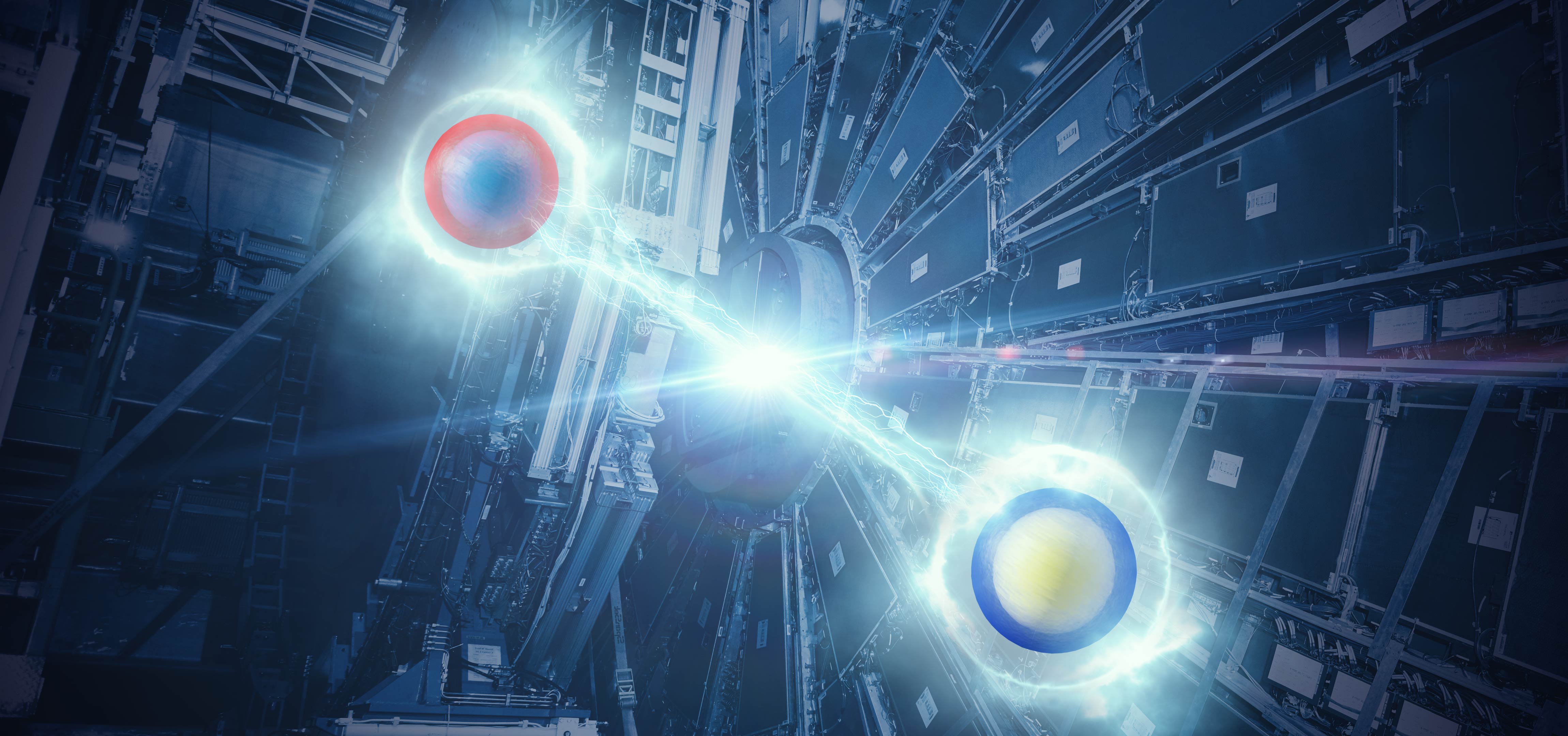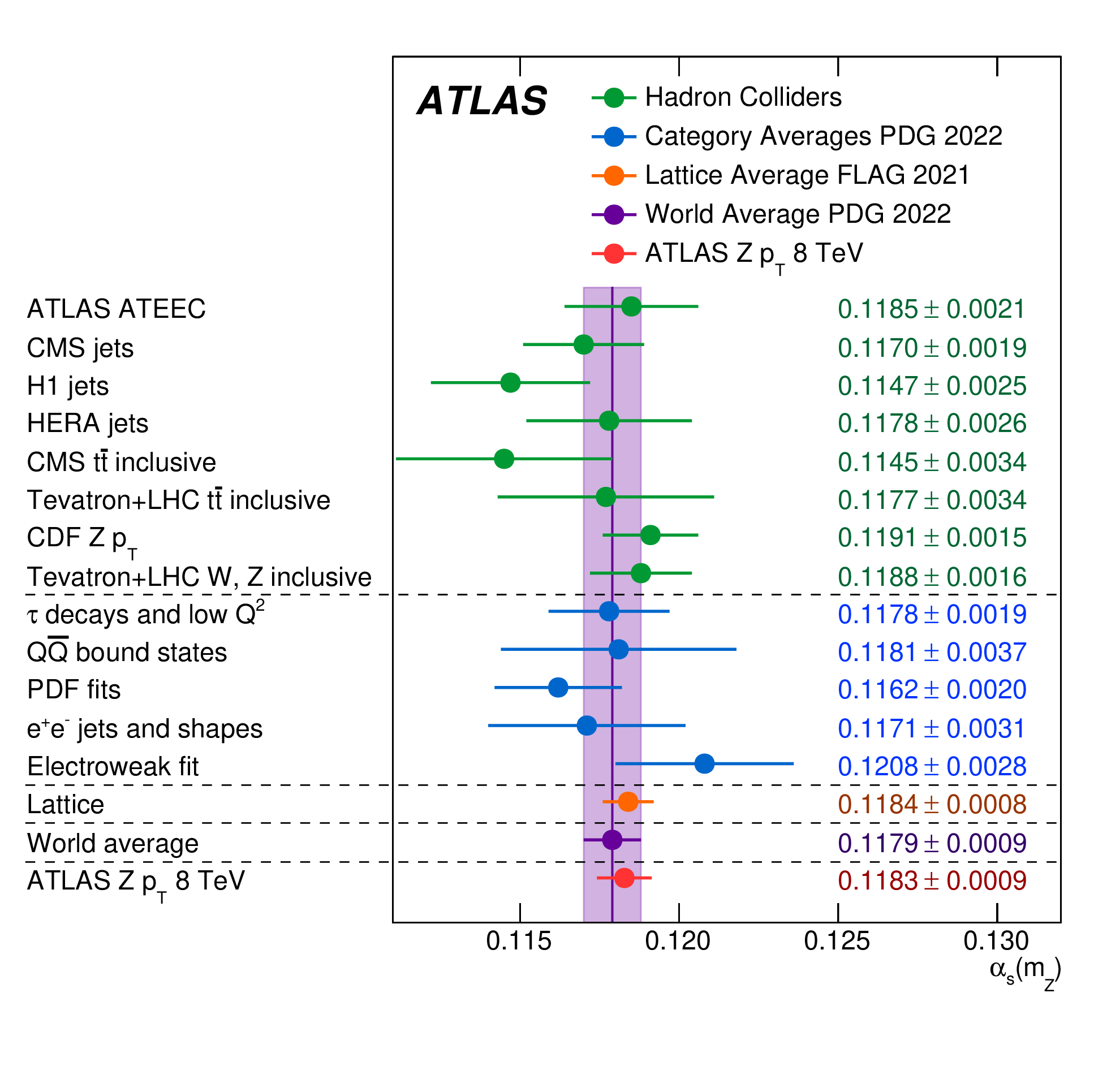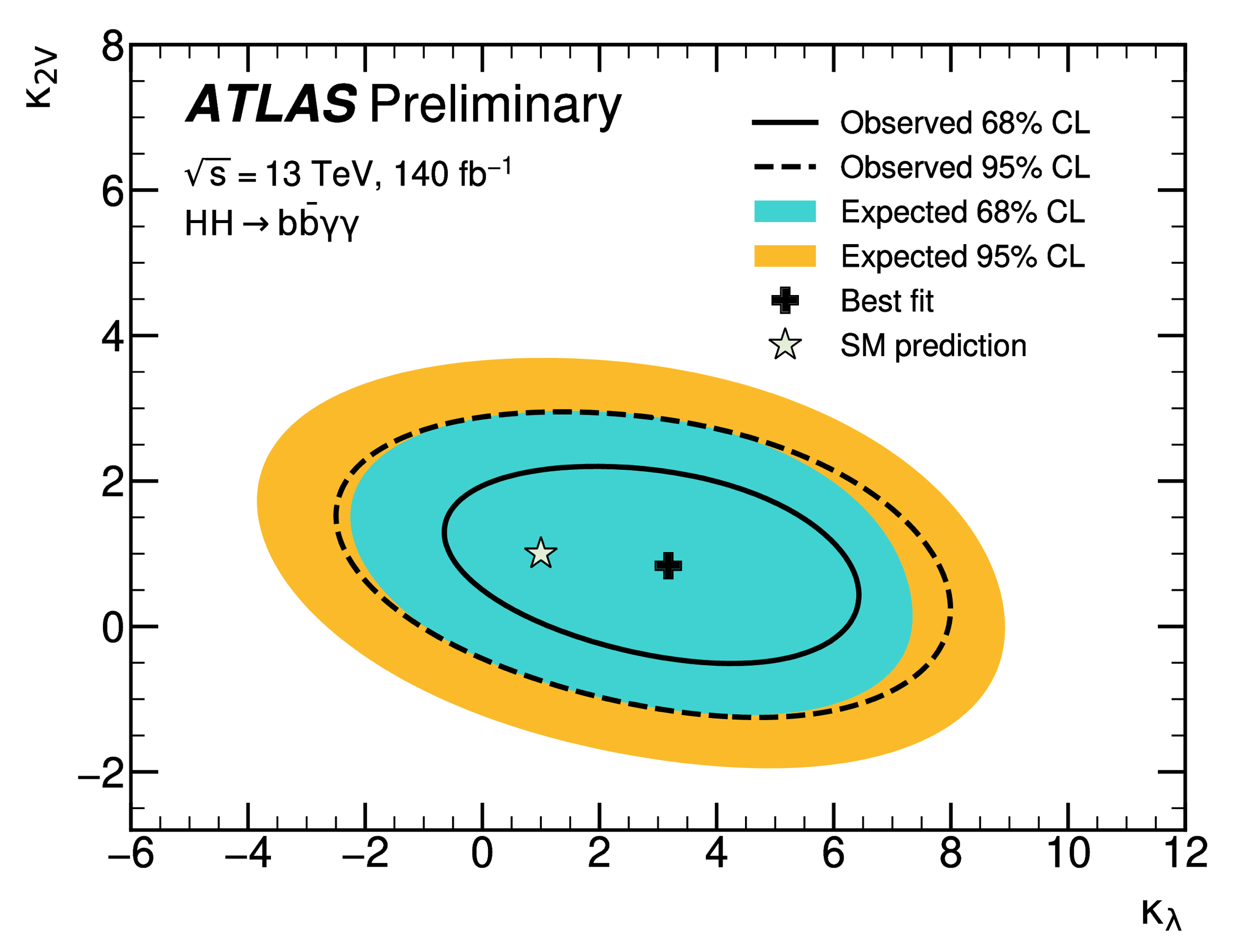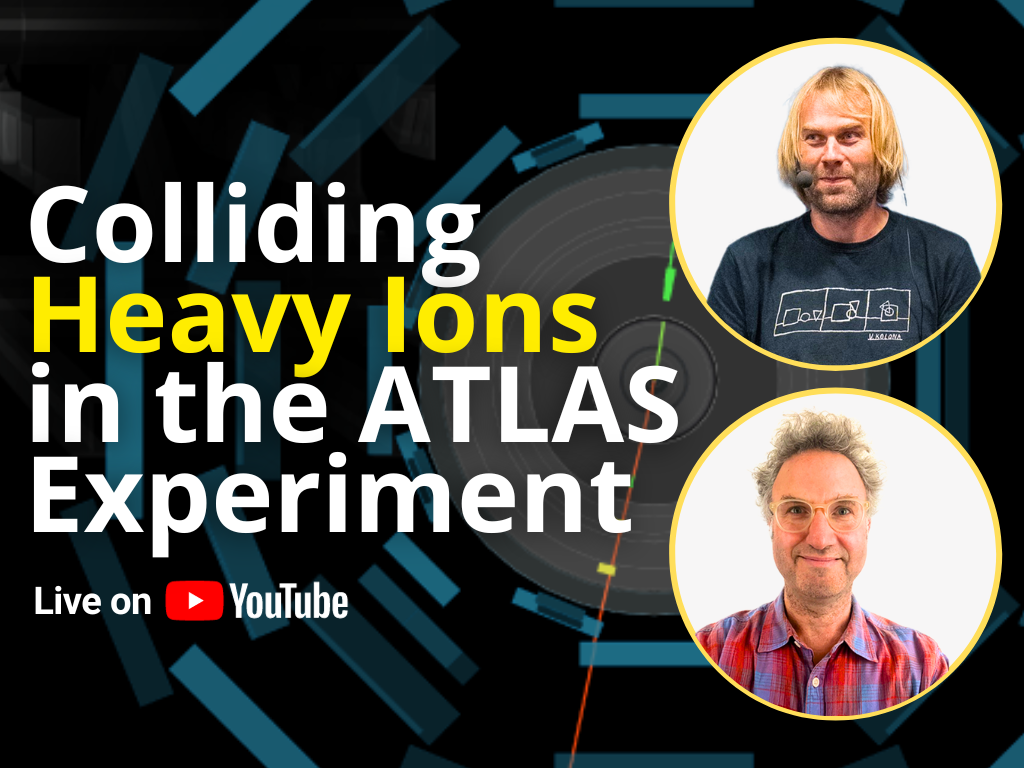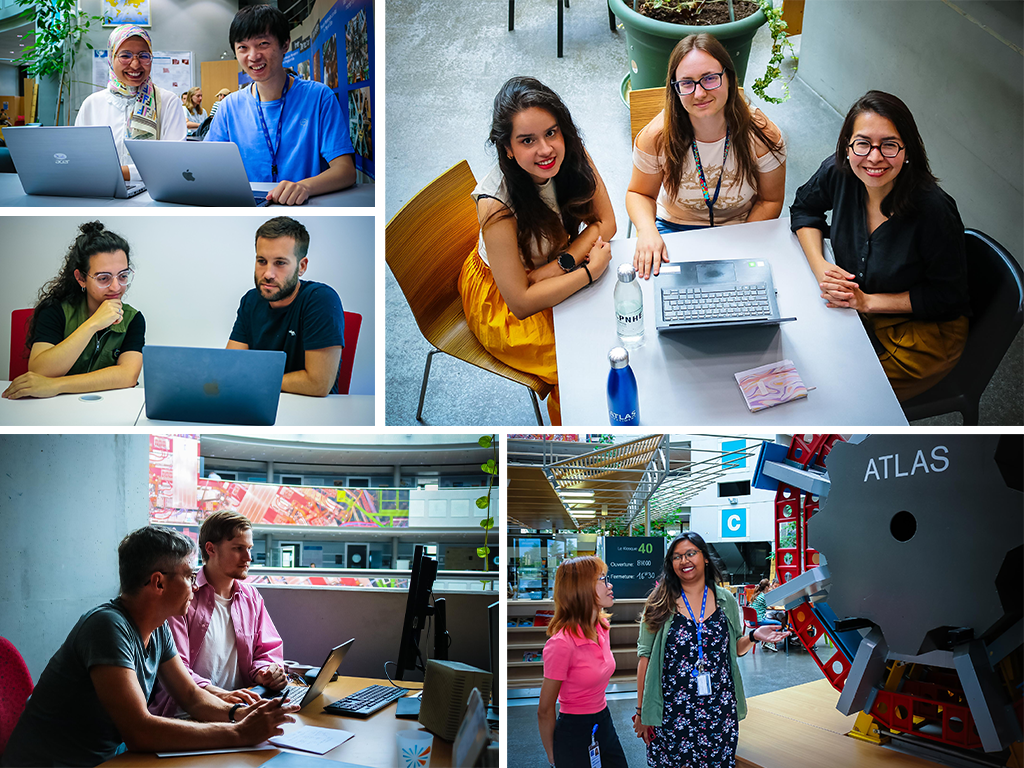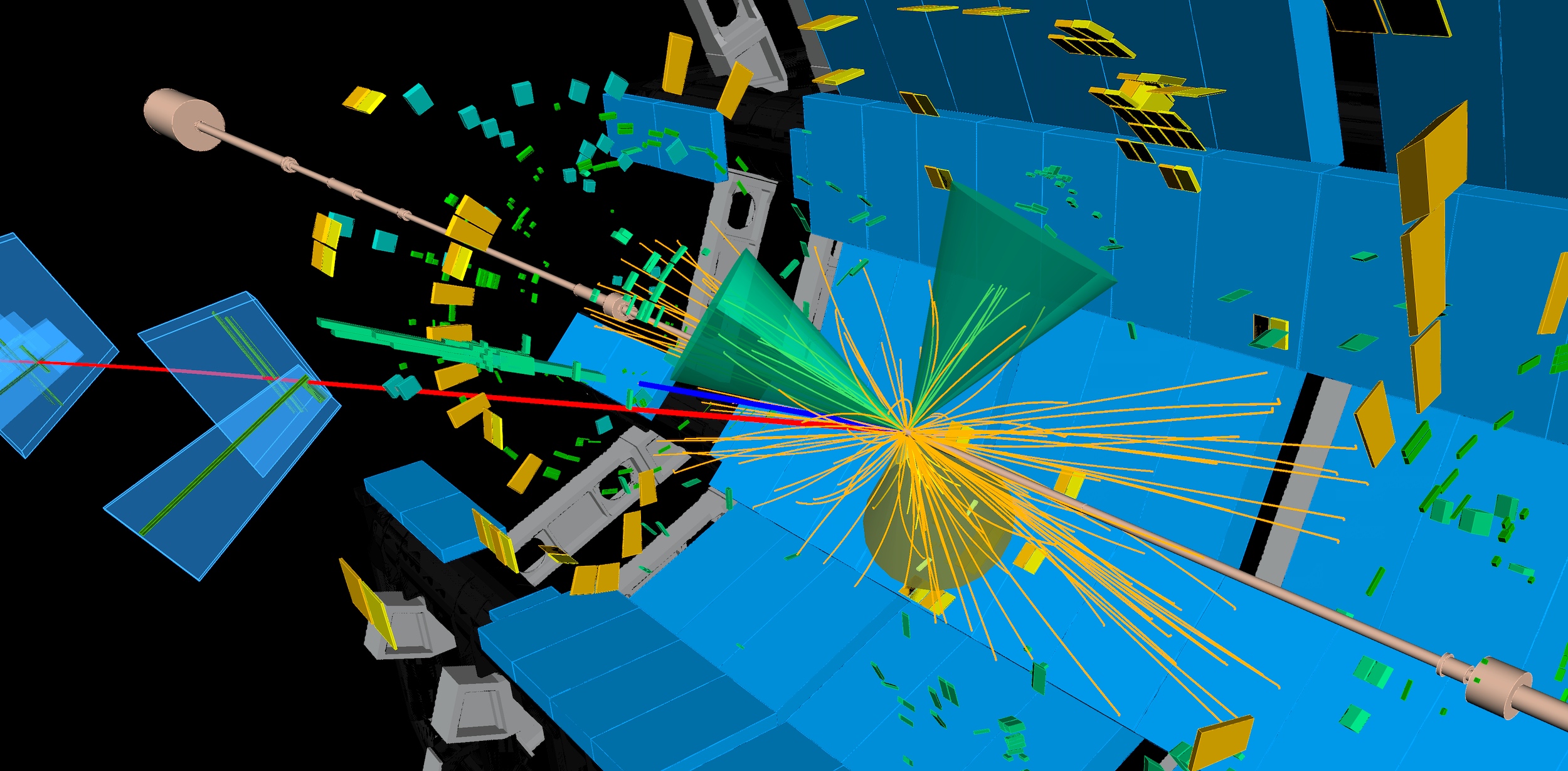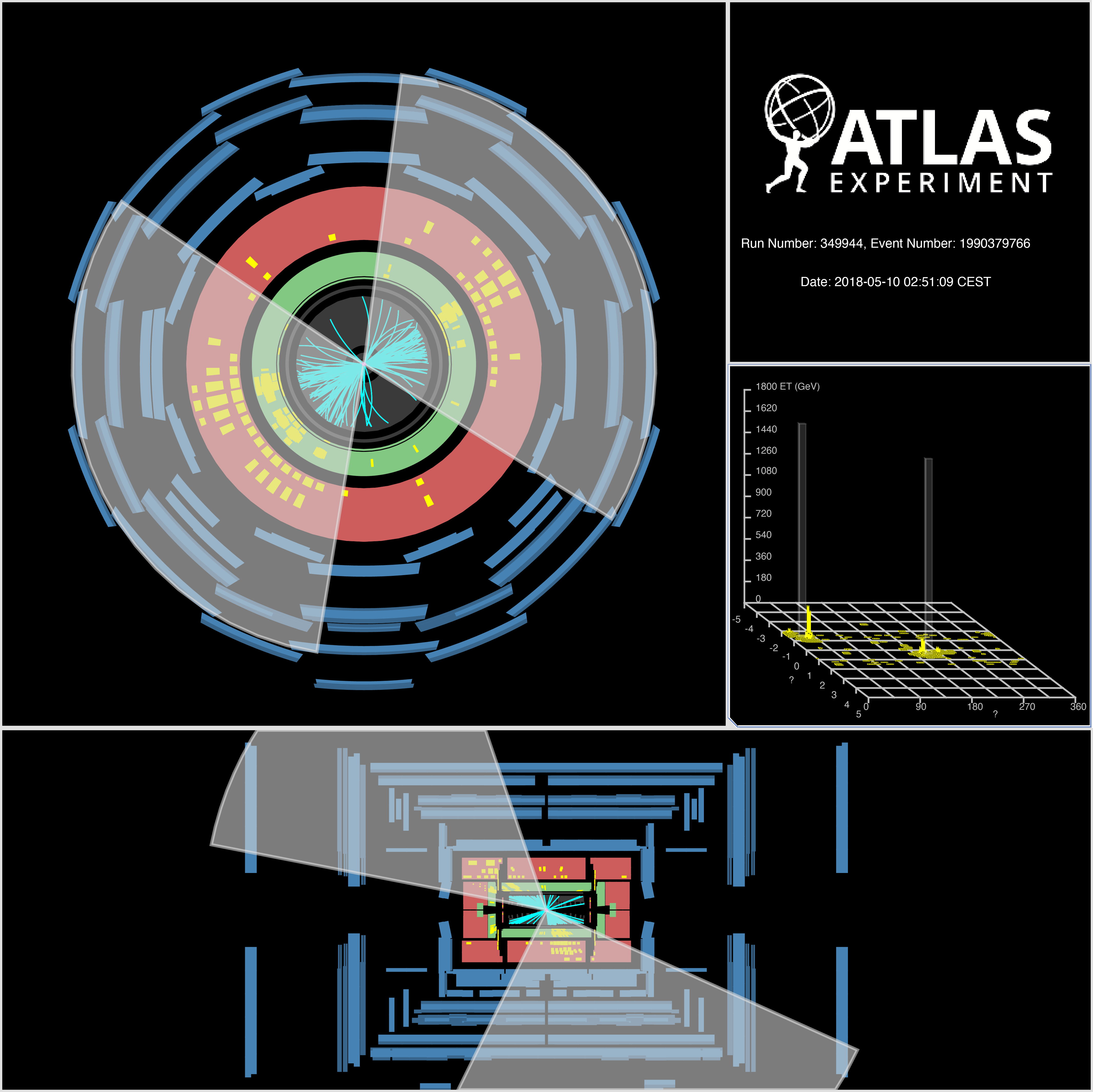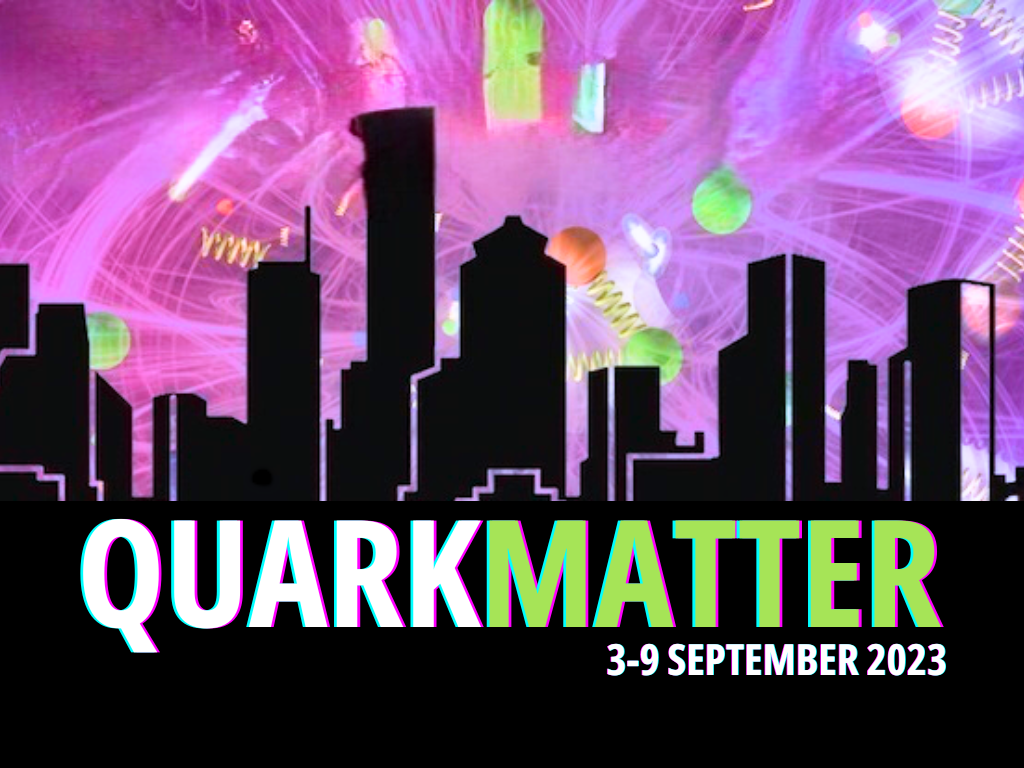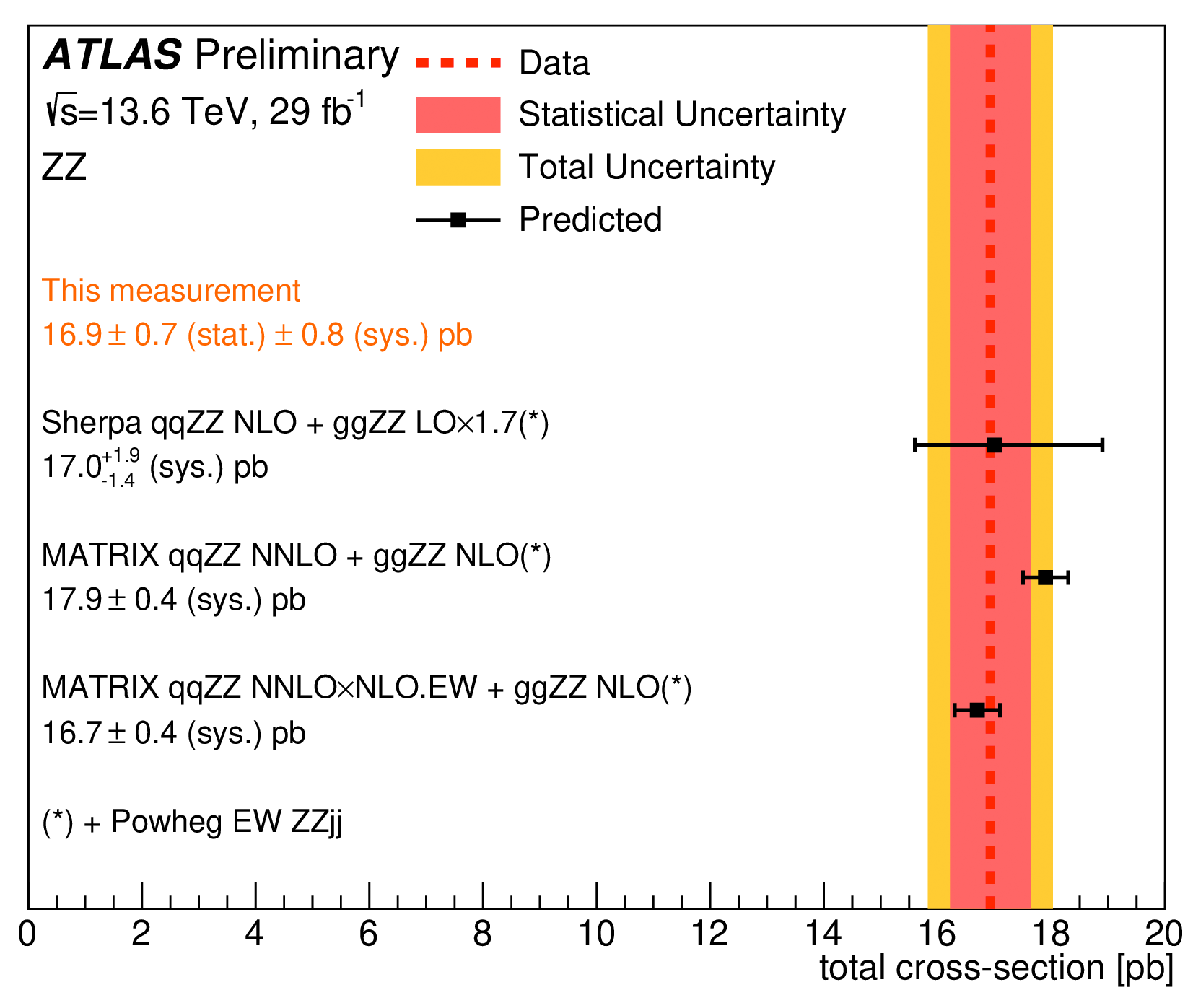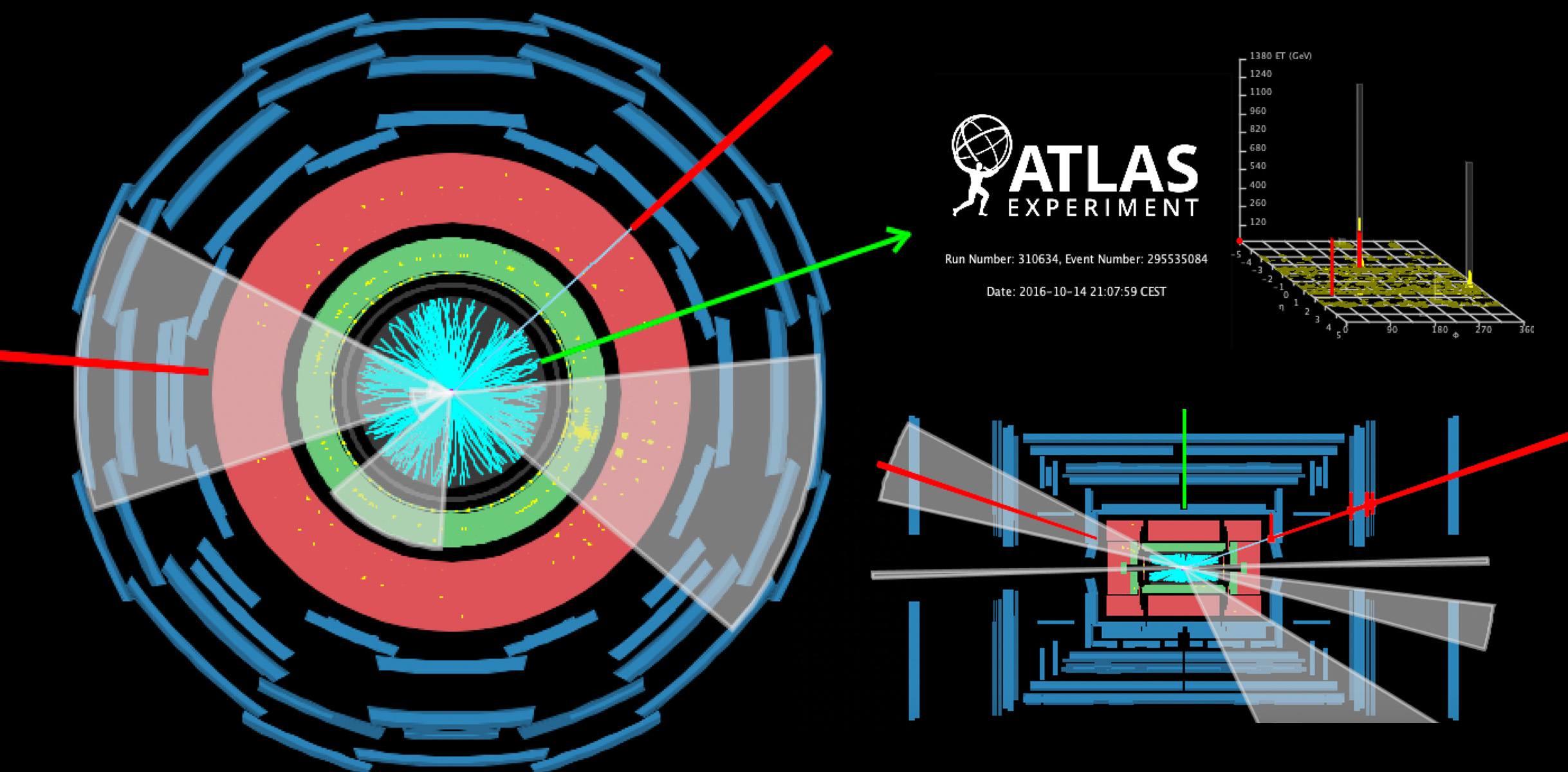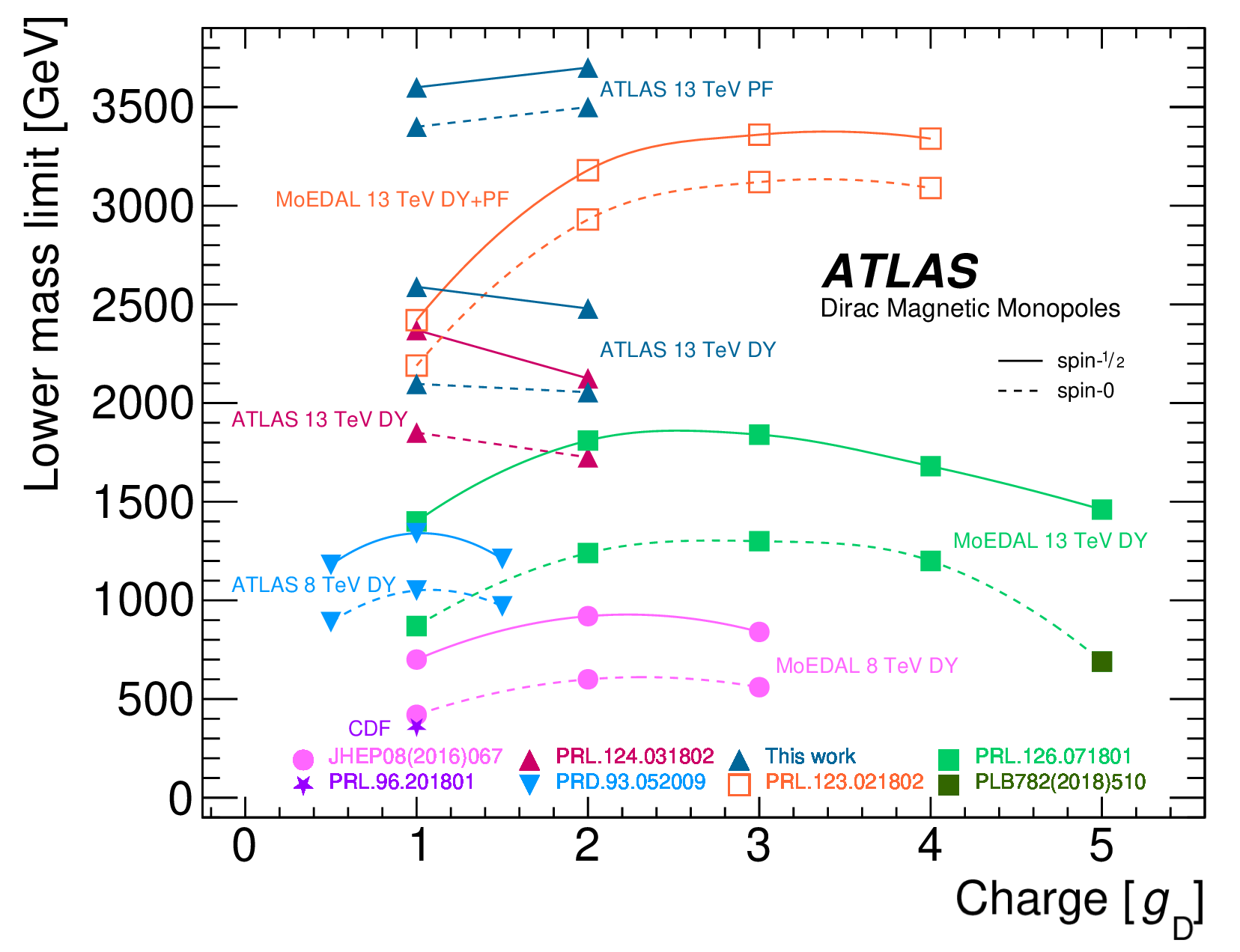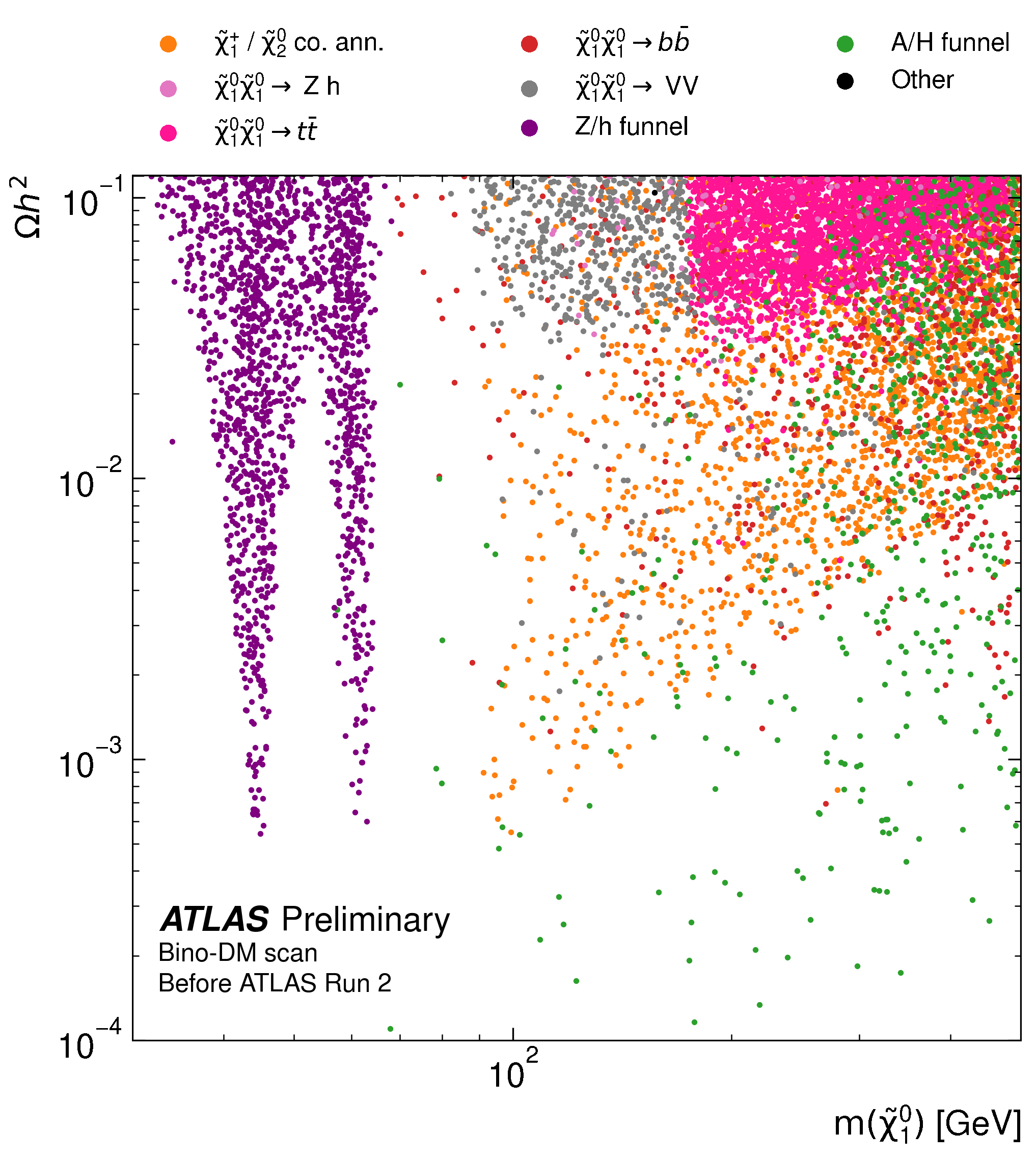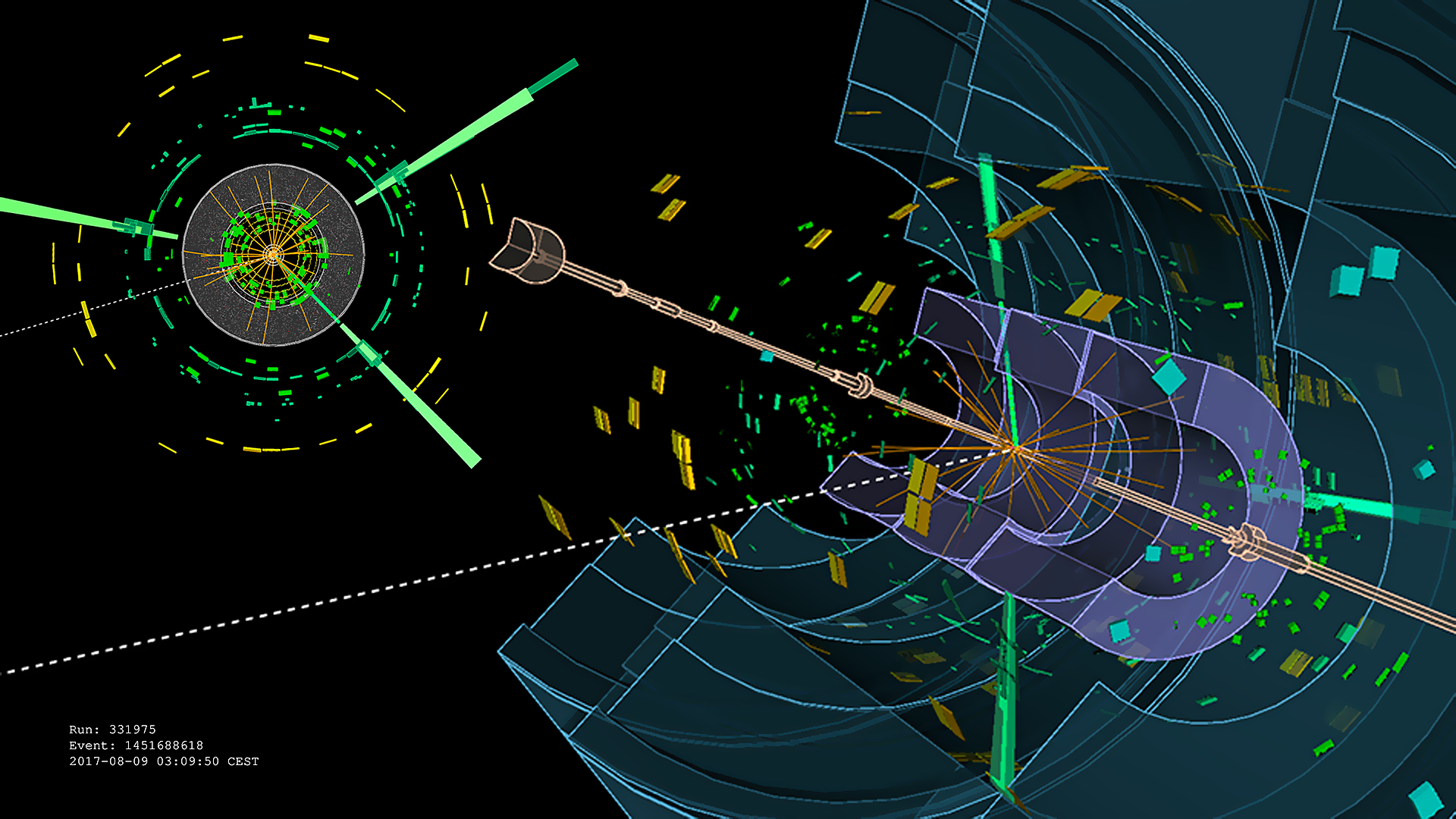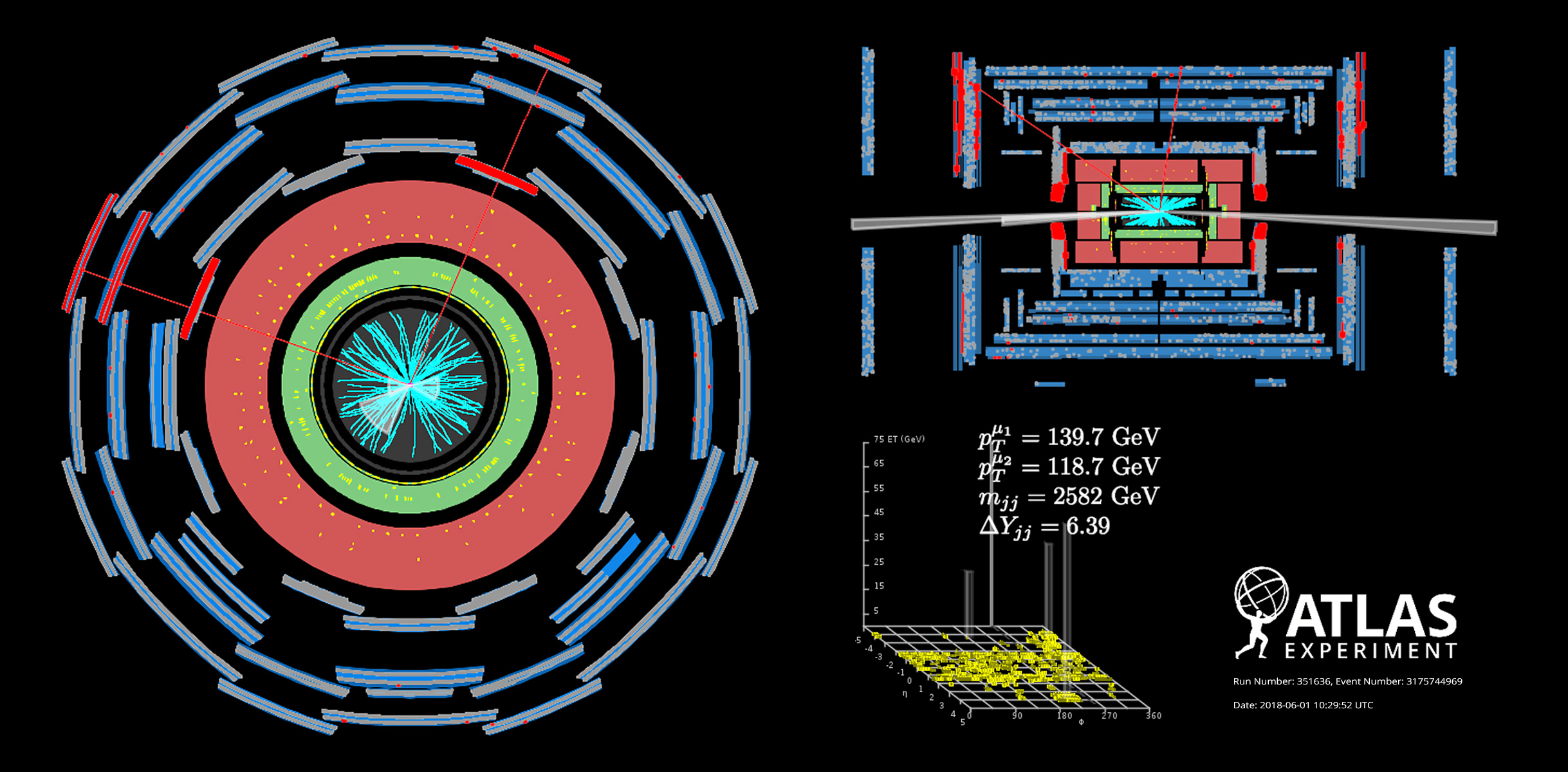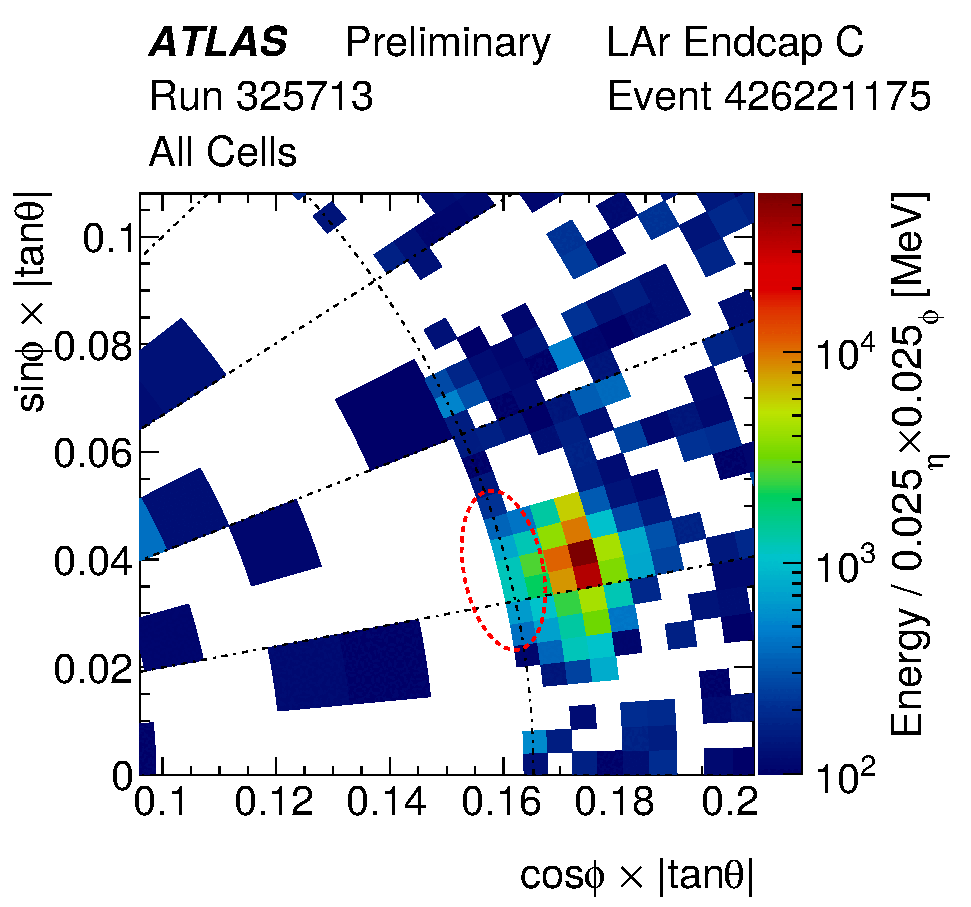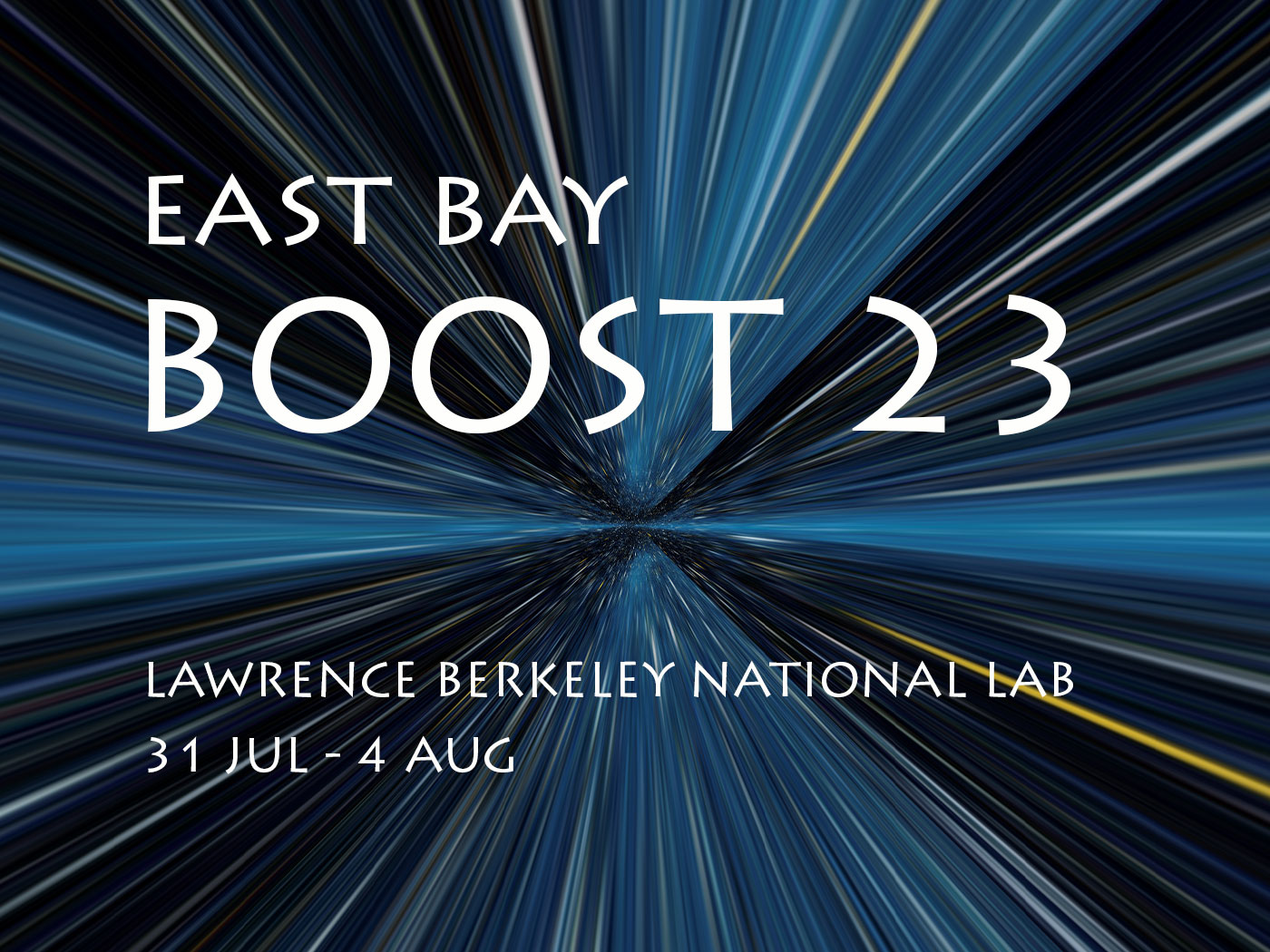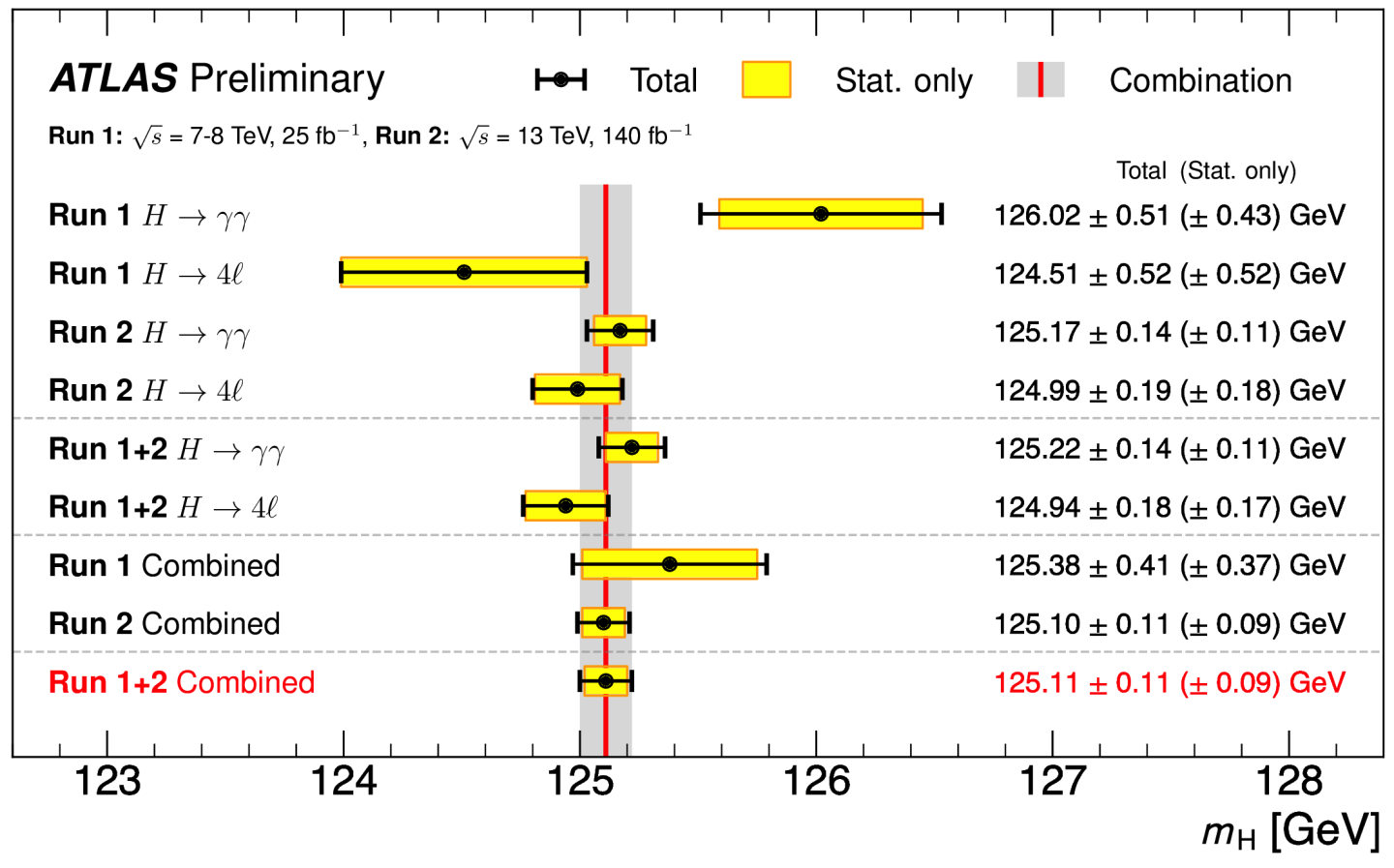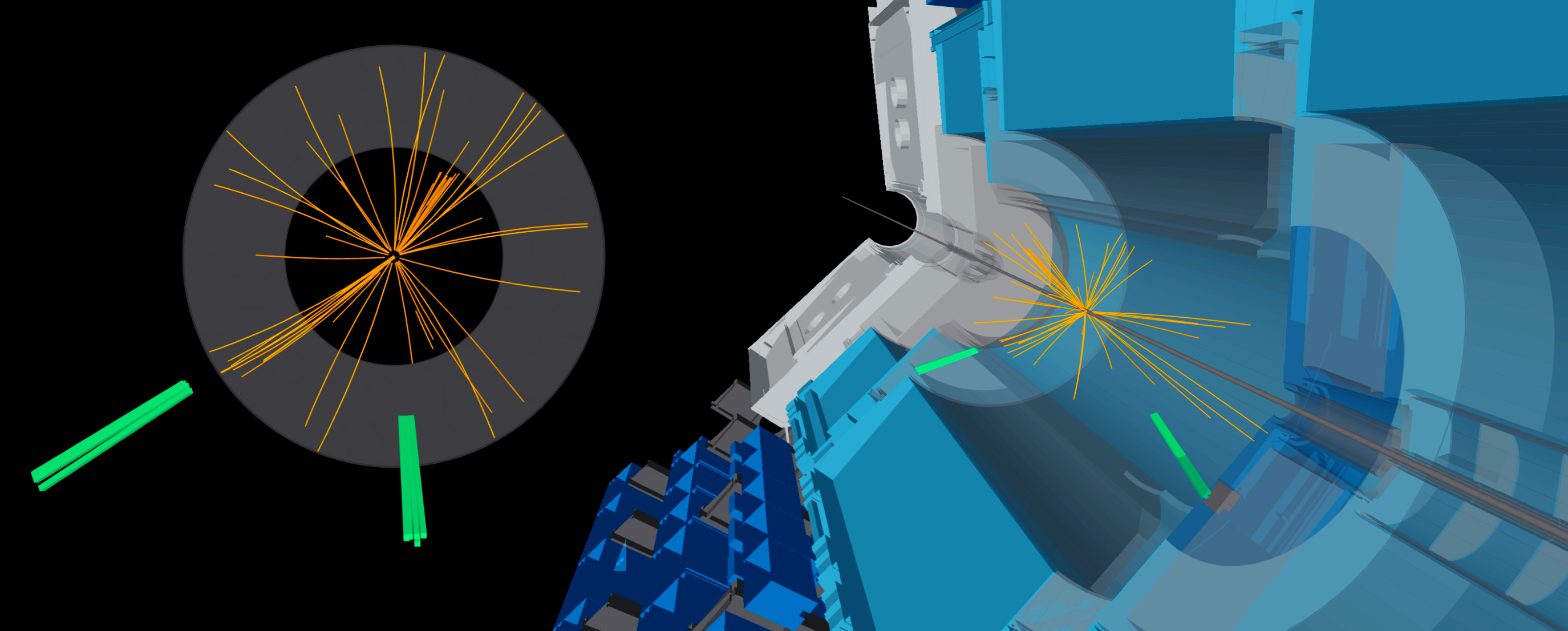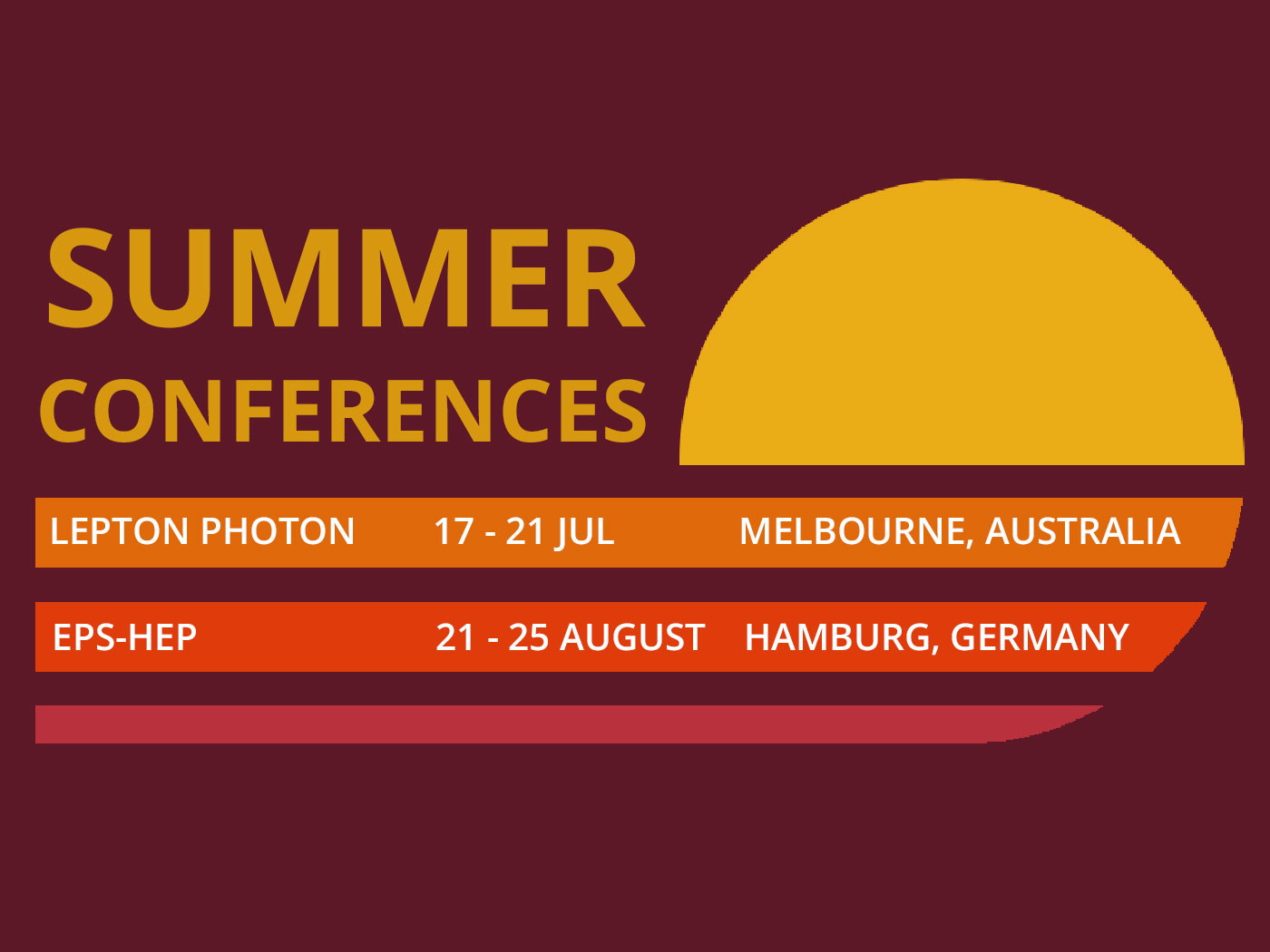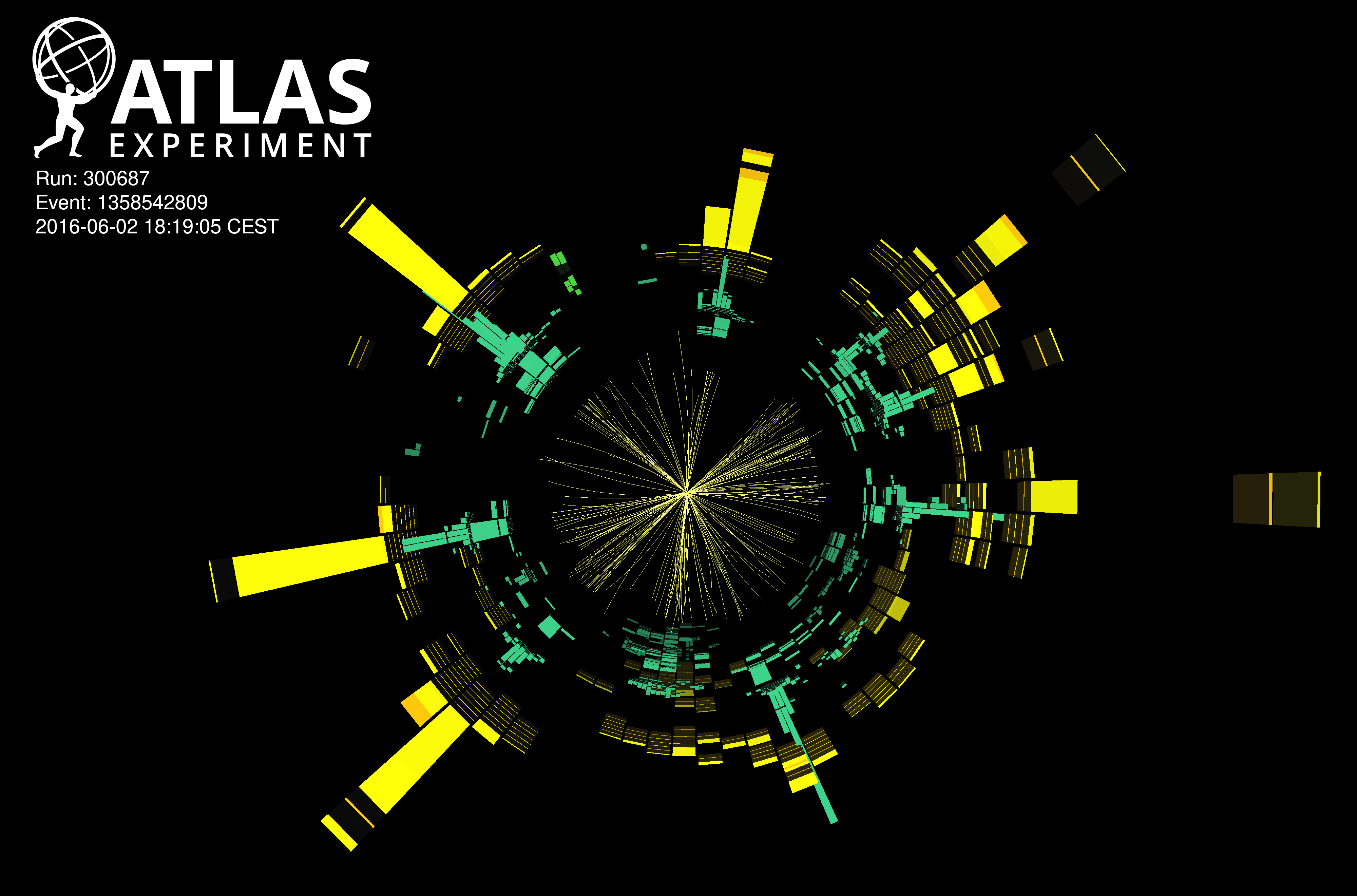From internship to authorship: one student’s unique journey in ATLAS
Lukas Kretschmann, a physics student at the University of Wuppertal in Germany, shares his journey in the ATLAS Collaboration – which began as a high-school student!
Blog |
ATLAS Week: through the eyes of students
ATLAS Week is an opportunity for young physicists to present and discuss their work. ATLAS students Sarah and Bruna were at the last ATLAS Week in Vancouver, Canada, and share what the experience was like for them.
Blog |
ATLAS gains momentum in study of charmonium
The ATLAS Collaboration has measured the production cross section of the J/ψ and ψ(2S) charmonium states in terms of the transverse momentum and the rapidity. For both states, they examined the widest range of transverse momentum so far, thus providing new input for theoretical models.
ATLAS and CMS unite to weigh in on the top quark
The ATLAS and CMS Experiments at CERN have just released a new measurement of the mass of the top quark. The new result combines 15 previous measurements to give the most precise determination of the top quark mass to date.
ATLAS achieves highest-energy detection of quantum entanglement
In a new result from the ATLAS Collaboration, physicists observed – for the first time – quantum entanglement between a pair of quarks. This is the highest-energy measurement of entanglement to date.
ATLAS measures strength of the strong force with record precision
The result showcases the power of the LHC to push the precision frontier and improve our understanding of nature.
Shedding light on Higgs-boson self-interactions
The ATLAS Collaboration has released two brand-new results searching for di-Higgs events in the full LHC Run-2 dataset. In one, researchers looked for events where one Higgs boson decays into two bottom quarks and the other decays into two photons. In the other, they looked for events where one Higgs boson decays into two bottom quarks, and the other into two tau leptons or W/Z bosons, which subsequently decay into leptons.
ATLAS Live talk: How does ATLAS study heavy-ion collisions?
On 14 September at 6pm CEST, Dr. Martin Rybar and Dr. Peter Steinberg will give a live public talk on the ATLAS Youtube Channel on how the ATLAS experiment records heavy-ion collisions.
News |
A summer for science
For many students, a summer internship is a rite of passage — and a gateway to future jobs. Looking for a valuable glimpse into what a future in physics might hold, dozens of university students from around the world headed to CERN to participate in the Summer Student Programme and engage with cutting-edge scientific research at the ATLAS Experiment. With the support of their supervisors, these students have been deepening their knowledge of particle physics, engineering and computing through challenging projects. These are the stories of 12 of these students.
News |
ATLAS observes top quarks in proton-lead collisions
The ATLAS Collaboration at CERN observes the production of top-quark pairs in proton-lead ion collisions. ATLAS’ new result confirms and builds upon an earlier observation made by the CMS Collaboration, expanding it into a new decay channel.
When jets go dark
For the very first time, the ATLAS Collaboration has searched for dark jets that closely resemble QCD jets. Instead of originating from Standard-Model particles, these dark jets would be produced through a new, heavy particle called the Z' boson.
Summary of new ATLAS results from Quark Matter 2023
The ATLAS Collaboration has prepared a variety of new results for the Quark Matter conference, focusing on the study of collisions involving lead ions, xenon, and lead ions with protons.
News |
ATLAS measures ZZ production using Run-3 data and a new slim data format
The ATLAS Collaboration has just released a new measurement of the production cross section of two Z bosons. This highlight result examines data collected during Run 3 of the LHC and pioneers the use of PHYSLITE, a new, reduced data format that requires significantly less storage.
ATLAS searches for new phenomena using unsupervised machine learning for anomaly detection
In a new paper submitted to Phys. Rev. Lett., the ATLAS Collaboration pioneers the use of unsupervised machine learning to search for anomalous collision events which could be from new physics phenomena.
Quest for the curious magnetic monopole continues
In a new study presented at the EPS-HEP 2023 conference, the ATLAS Collaboration combed through the full LHC Run-2 dataset (recorded 2015-2018) in search for magnetic monopoles and HECOs (see Figure 1). The result places some of the tightest limits yet on the production rate of magnetic monopoles.
ATLAS releases comprehensive review of supersymmetric dark matter
In new results presented today, the ATLAS Collaboration provides its most comprehensive overview of the searches for weakly-interacting supersymmetric particles. By developing new search algorithms and exploiting machine learning techniques, researchers have probed deep into this difficult-to-reach territory.
Three’s no crowd: ATLAS measures tri-boson production
The ATLAS Collaboration has announced the first observation of two different tri-boson processes: the simultaneous production of a W boson with two photons (Wγγ) and the production of a W boson, a Z boson and a photon (WZγ). The production of a Z boson with two photons (Zγγ) was first observed in 2016 using data from LHC Run 1 (2010-2013). In a new publication, the ATLAS Collaboration expanded the scope of this initial observation using Run 2 data.
ATLAS hunts for new physics in the scattering of W bosons
Vector boson scattering processes play a special role within the Standard Model, as they are closely related to the Higgs mechanism and can proceed via an exchange of a Higgs boson. By studying these processes, ATLAS physicists are exploring multiple new-physics models, including anomalous self-interactions of the W bosons and extended Higgs sector with additional Higgs bosons.
Machine learning is revolutionising our understanding of particle “jets”
This week, ATLAS physicists presented four exciting new results about jet tagging using AI algorithms at the BOOST 2023 conference held at Lawrence Berkeley National Lab (USA).
Signal and noise
The ATLAS Collaboration has released two new results explaining how detector timing measurements and calorimeter signal calibration using artificial intelligence (AI) are being used to further improve the quality of data recorded by the experiment.
Summary of new ATLAS results from BOOST 2023
The 15th International Workshop on Boosted Object Phenomenology, Reconstruction, Measurements, and Searches at Colliders (BOOST 2023) kicks off today in Lawrence Berkeley National Lab, California (USA). The conference brings together experts from the LHC experiments and the theory community to discuss new approaches for using “jets” of particles in studies of Quantum Chromodynamics (QCD) and searches physics beyond the Standard Model.
News |
ATLAS sets record precision on Higgs boson’s mass
The new result is the most precise determination of the Higgs-boson mass yet, achieving a remarkable accuracy of 0.09% for this fundamental parameter.
ATLAS measures Higgs boson mass with unprecedented precision
This week, at the Lepton-Photon Conference in Melbourne (Australia), the ATLAS Collaboration presented its measurement of the Higgs boson mass in studies of Higgs decays to two photons using the full LHC Run-2 dataset (“H→yy” or the diphoton channel), and a new combination of this measurement with the 2022 measurement of the Higgs boson mass in studies of the Higgs decays to four leptons (the “H→4l channel”).
Summary of new ATLAS results from 2023 summer conferences
The summer conference season is here! While for some, summer means slowing down – for ATLAS researchers, it means the start of new conferences, with more new results to be presented! This season, experimental physics and theorists will be traveling to Melbourne, Australia, for the International Symposium on Lepton Photon Interactions at High Energies (Lepton Photon), and to Hamburg, Germany, for the European Physical Society Conference on High Energy Physics ( EPS-HEP).
News |
Giving collisions a new shape
When studying the shape of LHC collision events, physicists ask: how similar or different is their energy flow? The ATLAS Collaboration recently published a measurement of new collision event shapes in high-energy multijet events at the LHC.

